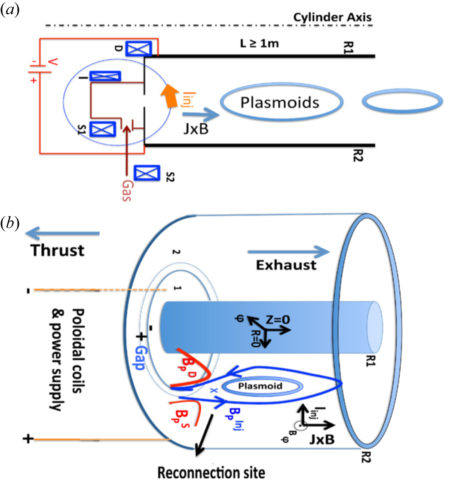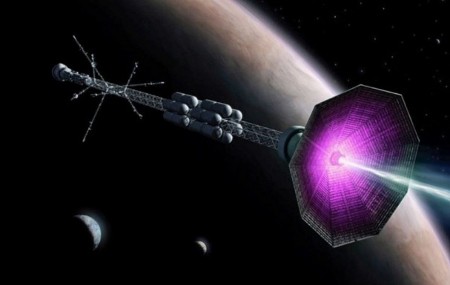Fatima Ebrahimi is a physicist working in the Plasma Physics Laboratory (PPL) at Princeton University. Her focus has been on fusion energy. Nuclear fusion is seen as a clean alternative to current nuclear reactor technology based on fission. I have written extensively about different designs for fusion reactors. At Princeton, the laboratory is experimenting with a tokamak, a doughnut-shaped device known as the National Spherical Torus Experiment Upgrade (NSTX-U).
The largest tokamak fusion device is ITER, located in Europe. The timetable for ITER has dramatically slipped with 2040 now the estimated date for proof of concept. Will it become the model for nuclear energy in the near future. If so it will join solar, wind, geothermal and tidal energy as zero-emission technologies that can replace fossil fuels.
But Ebrahimi sees something else coming out of the NSTX-U. She sees the utility of the technology for rocket propulsion. Instead of enhanced magnets containing the plasma produced within a tokamak, the energy could be directed out the back of a rocket.
Ebrahimi, in an interview in January of this year, described how she arrived at the concept. “I had the idea in 2017…thinking about the similarities between a car’s exhaust and the high-velocity exhaust particles created by PPPL’s National Spherical Torus Experiment. During its operation, this tokamak produces magnetic bubbles called plasmoids that move at around 20 kilometres per second, which seemed…a lot like thrust.”
A prototype has yet to be built but the concept represents an advance on what NASA already uses with satellites called pulsed plasma thrusters (PPTs). These low-powered electric thrusters use two high voltage electrodes placed close to the propellant source. When the fuel, usually xenon gas, is ignited the thrusters produce a small plasma discharge guided by the electric fields to discharge out the back of a thruster. The amount of thrust produced is small, no more than you blowing on a piece of paper. But over time, if operated continuously, a PPT can attain speeds of near 7 kilometres per second.
What Ebrahimi is proposing replaces the electrodes with magnets and uses almost any type of gas, not just xenon, as the propellant. The magnets concentrate and channel the gas plasma to form bubbles containing lots of kinetic energy which can propel a rocket at speeds minimally exceeding 72,000 kilometres (44,730 miles) per hour. Note I said minimally, equivalent to 20 kilometres (12 miles) per second. That’s almost three times faster than existing chemical rocket propulsion systems today. But it gets better. By adjusting the magnetic field Ebrahimi’s plasma rocket can theoretically reach speeds of 1.8 million kilometres (1.1 million miles) per hour, 70 times faster than what Elon Musk’s Starship can produce to fly to Mars. Musk’s rocket journey of six to eight months would be dramatically reduced to as little as a couple of weeks making it possible to visit Mars not just when it is conveniently aligned with Earth, about every two years, but regularly.
Ebrahimi describes her propulsion system in an article that appeared in December of last year in the Journal of Plasma Physics. She argues that the only practical form of propulsion that will allow humans to explore the Solar System beyond the Moon and Mars is a rocket that uses magnetic reconnection, the physical process that occurs in the interaction between highly conducting plasmas and magnetic fields to produce kinetic energy — velocity. This is the energy behind coronal mass ejections erupting from the Sun’s surface at high speed.
Ebrahimi calls the output of her engine (see schematic below), Alfvenic, named after Hannes Alfvén, who first described waves produced by the interaction of magnetic fields with plasmas or fluids.

With this type of rocket engine, Ebrahimi envisions humans exploring the Solar System with little fear of exposure to cosmic radiation. She believes we could even go interstellar reaching solar systems within a few light-years from ours. She hopes to build a prototype soon.









